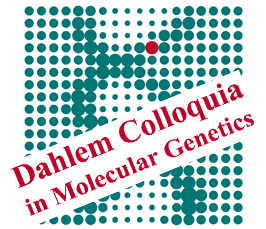Dahlem Colloquium: "Viewing nuclear architecture through the eyes of nocturnal mammals"
- Datum: 01.04.2019
- Uhrzeit: 11:00 - 12:00
- Vortragende(r): Irina Solovei
- Department of Biology II, Biozentrum, Ludwig-Maximilians University Munich, Grosshadernerstrasse 2, 82152 Planegg-Martinsried, Germany
- Ort: Seminar Room SI, Tower 3
- Gastgeber: Maria Valieva, Department Mundlos

Abstract
The mammalian nucleus displays spatial segregation of active euchromatic from inactive heterochromatic genomic regions. In conventional nuclei, euchromatin is localized in the nuclear interior, whereas heterochromatin lies at the nuclear periphery. In contrast, rod photoreceptors of nocturnal mammals have inverted nuclei, with a dense heterochromatic core and a thin euchromatic outer shell. This inverted architecture converts rod nuclei into microlenses reducing light scattering in thick nocturnal retinas and thus facilitating vision at scotopic conditions.
The unusual nuclear organization of nocturnal rods with a regular concentric arrangement of different chromatin classes offers a unique model to study various aspects of nuclear architecture. Within the last decade, studies of inverted nuclei helped us to understand several fundamental principles of nuclear architecture:
- We have demonstrated that although inverted nuclei are fully functional, inversion is not a favorable chromatin arrangement in mammalian cells (Solovei et al, Cell 2009)
- We have identified two major mechanisms of heterochromatin peripheral tethering that are responsible for establishing the conventional nuclear architecture (Solovei et al, Cell 2013)
- We have shown that the building of a functional nucleus is largely a self-organizing process based on mutual recognition of chromosome segments marked by certain repeats (van de Werken et al, Genome Res 2017)
- Finally, we have demonstrated that interactions among
heterochromatic regions are central to phase separation of the
active and inactive genome in inverted and conventional nuclei
(Falk et al, 2018, bioRxiv: http://dx.doi.org/10.1101/244038)